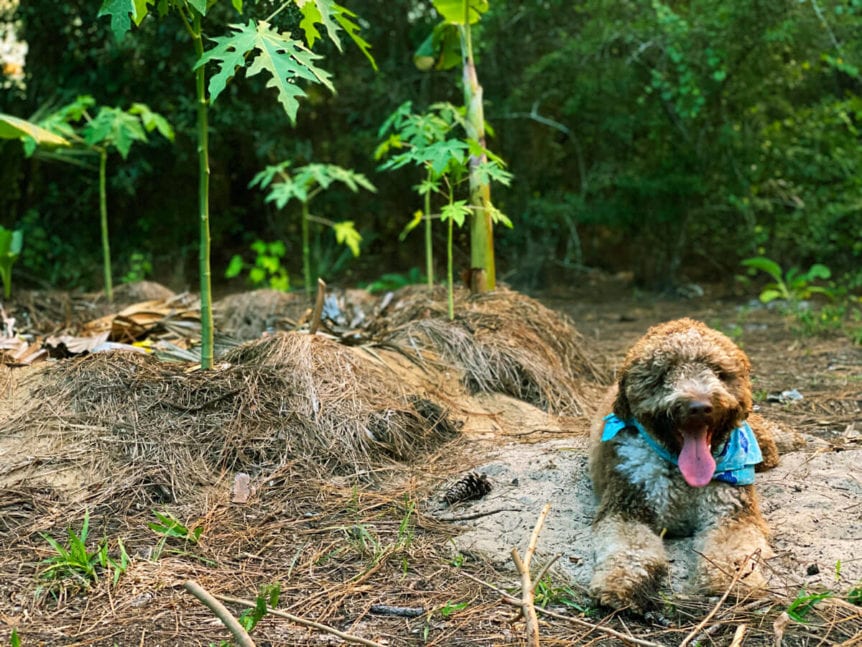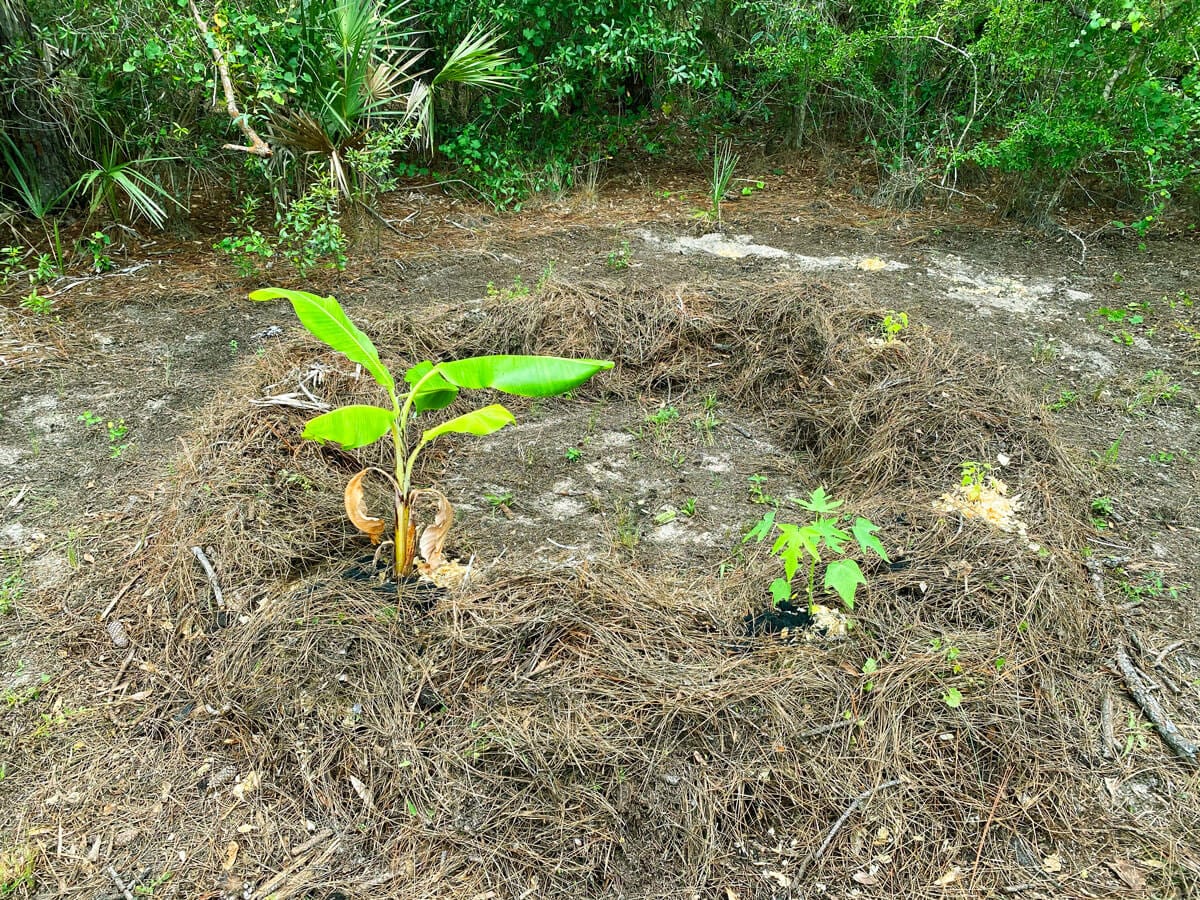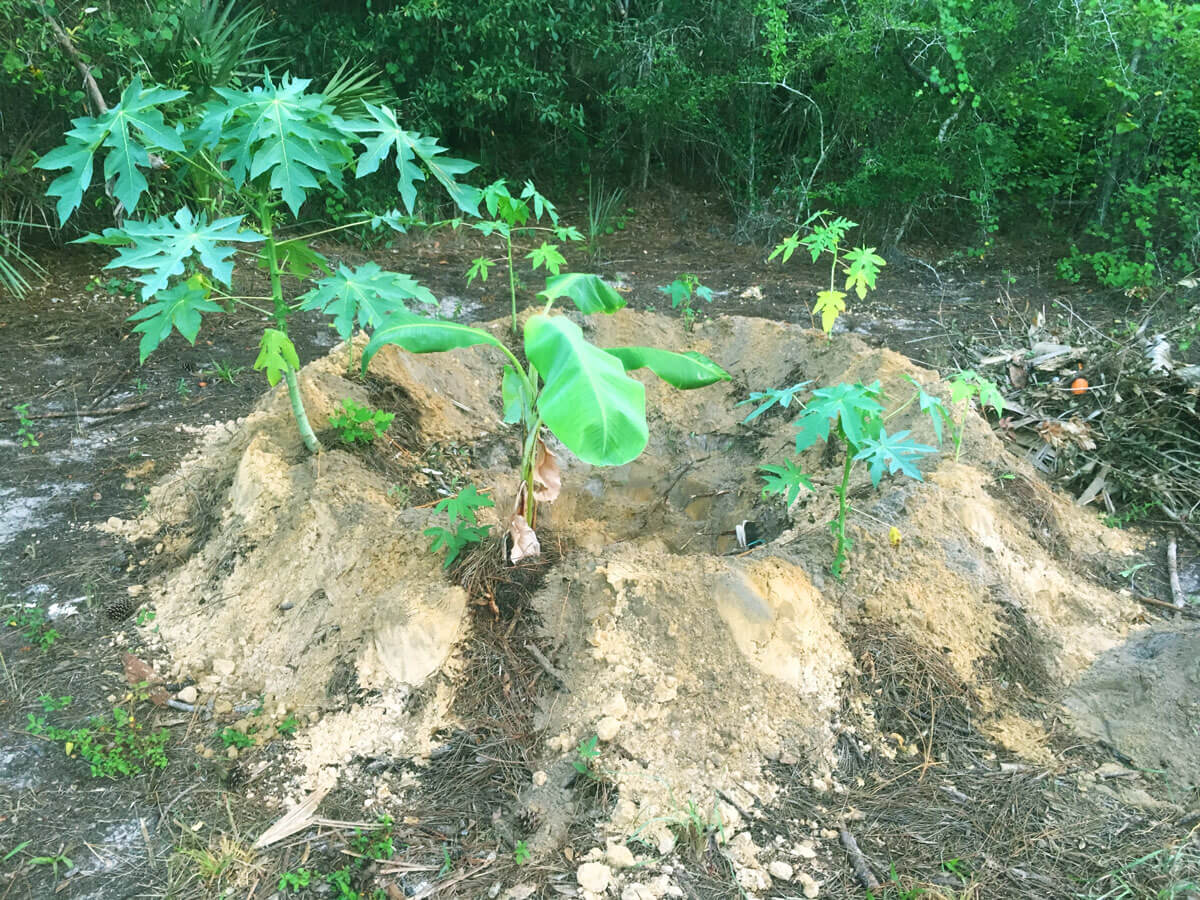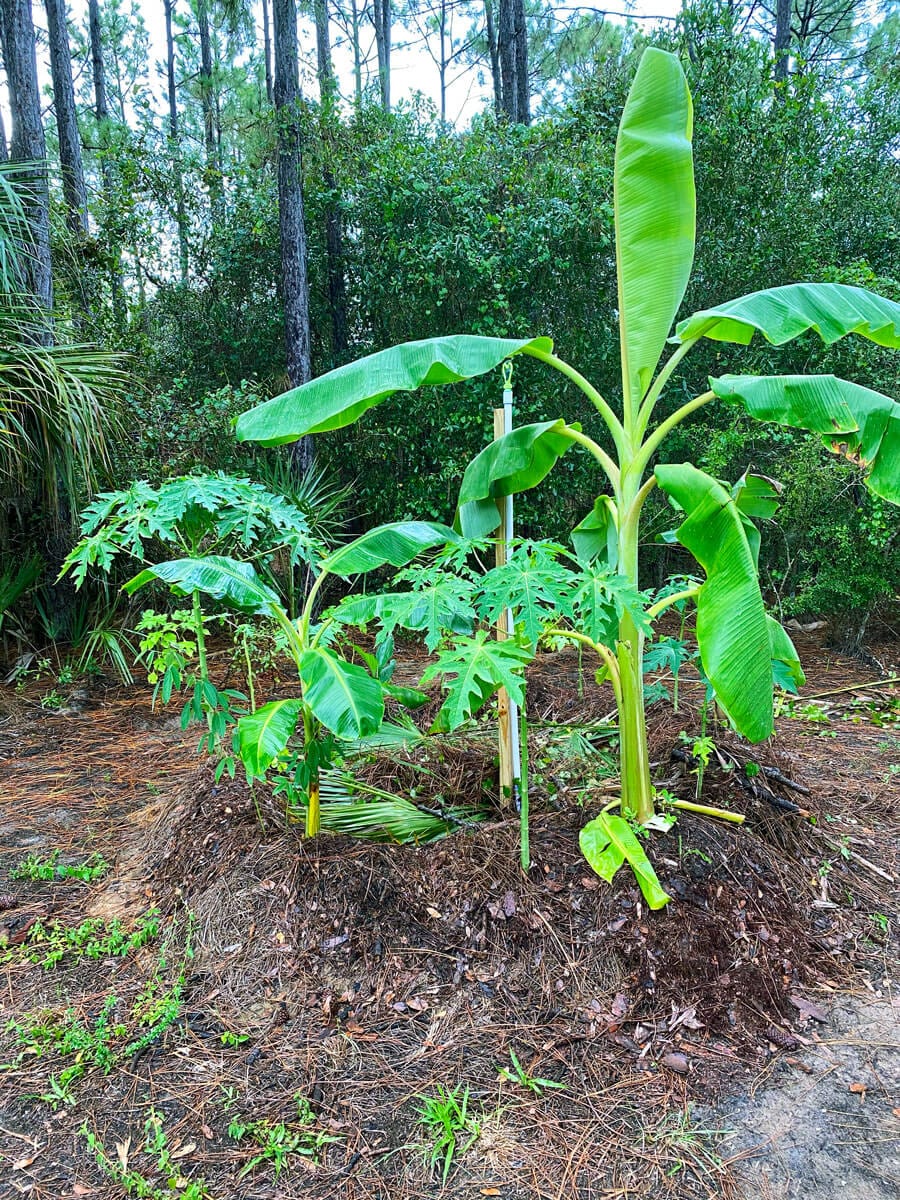
Banana Pit
Then we dug a 4 foot deep hole in the middle and piled the sand on the pine needle wall.
Next, we mixed the sand on the mound of pine needles together. Then we added some logs and bigger organic debris at the bottom of the pit. After we chopped some fresh vegetation and threw that in the pile as well as some old dead debris like sticks and leaves. The green plant debris is the nitrogen and will work to break down the dead debris which is carbon.
We planted the bananas and papayas on the top of the mound in a little "bucket" of soil dug out of the mound. In the "bucket" we put compost, peat moss, bio-char and worm castings to get things started off strong. The cassava and taro both like it really wet so those were planted on the inside lower part of the circle. The sweet potato was planted to the outside wall.
After a few months this will turn into compost and start lining the pit. Evenutally we want a mound of compost in the middle of the pit so it is actaully the hight of the outer wall where our plants will live.
As time passes we will chop the banana trees that have produced and put the trunks in the pit as well as old food, Amazon boxes and whatever else is organic and will eventually break down. No percentages or overthinking is needed. This is cold composting, meaning it will take years but require minimal planning and work. Slow, steady, low maintentance and cheap. Just our style!



